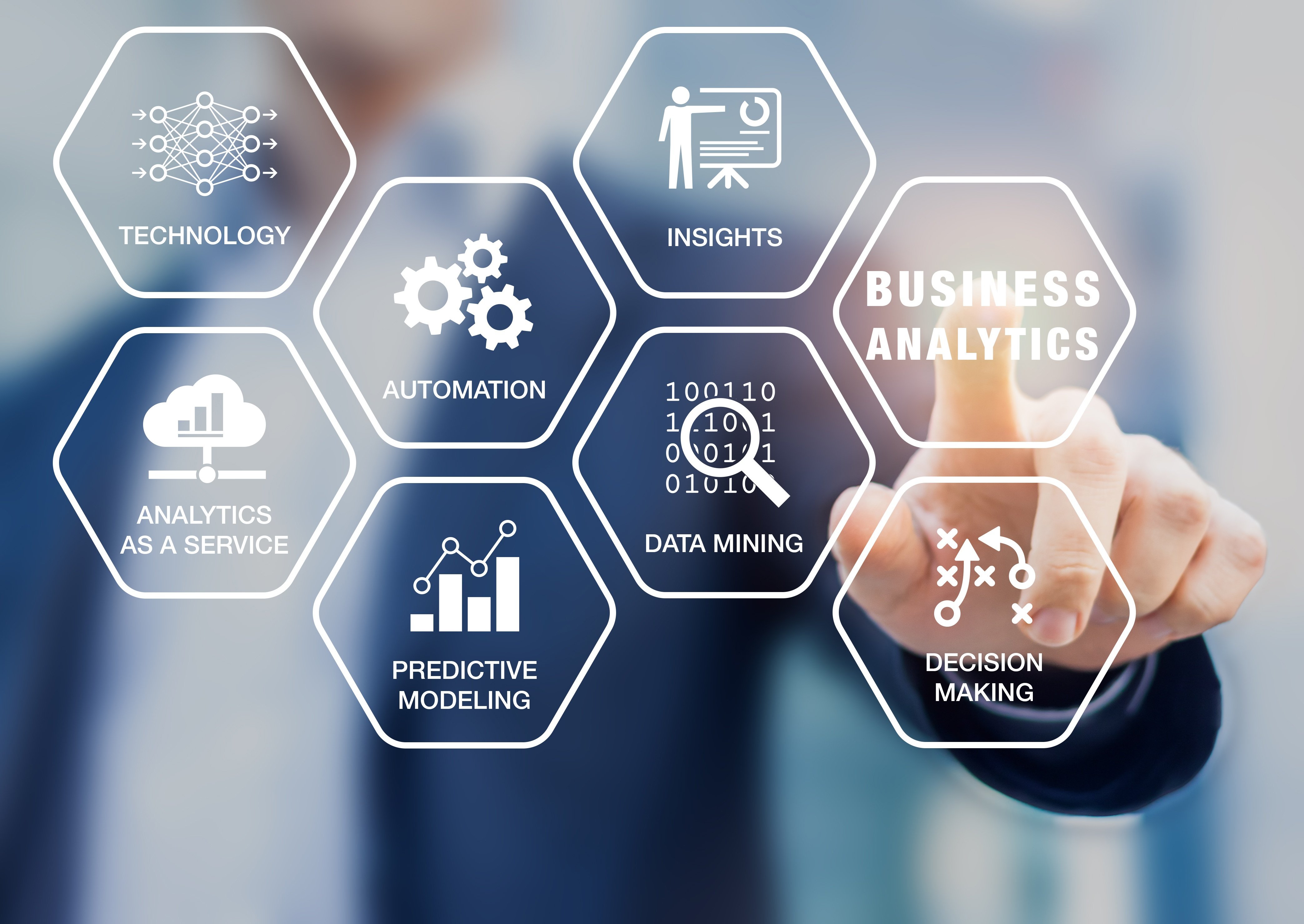This is the third of our three part series outlining the nine tech buzzwords retailers should actually understand. We’ve talked about a lot of different concepts in our previous posts, from artificial intelligence to virtual reality to natural language processing. Today, we’ll be addressing the last three concepts that will begin shaping retail in 2018: geotagging, biometrics, and predictive analytics. Let’s get started:
7. Geotagging
Thankfully, “geotagging” is a relatively simple concept to understand. Geotagging technology provides a location for the device being used. The most obvious examples of geotagging come from Facebook and Twitter, where users can voluntarily tag their posts with their location. However, certain apps like Uber and Waze automatically track their users’ location, providing powerful data to businesses. In an era where 77% of Americans own smartphones, the ability to identify where a customer is can helps solve one of the hardest challenges in omnichannel marketing: delivering the right message at the right time.
In today’s massively saturated consumer marketing environment, one where individuals are exposed to 10,000 brand messages per day, delivering the right message to the right person is no longer good enough to ensure relevance and engagement. The critical factor is being able to deliver that perfect message to your target audience at the exact moment that will impact their behavior. Or said more simply, a contextually relevant message.
Retail marketers can leverage geotagging to deliver tailored content to an individual’s smartphone to elicit specific responses at the right time. For example, grocery retailers are often powerless to influence customer behavior in “center store”, so the majority of brands deliver relevant marketing content to shoppers when they’re not shopping. With geotagging, these same brands can send offers and content to a shopper’s phone when they enter a store, or even pass by a specific aisle. Imagine a brands like Heinz being able to offer special discounts to consumers via SMS message as they are physically passing the condiment section of a grocer - the likelihood of conversion is increased simply because the right message was delivered to the right person at the right moment. That’s the power geotagging can offer retailers, and US retailers like Target are already using this technology to guide the shopper experience.
8. Biometrics
“Biometrics” technology is one of the most interesting innovations of this century. Using sensory hardware, computers are able to key in on a few specific attributes of a person and use those attributes to identify who they are. For example, think of the fingerprint readers on your smartphone. In addition, iris readers, signature scanners, and facial recognition technologies also help machines identify who you are.
While the typical use cases have centered around security - protecting personal information and reducing fraud - biometrics is emerging as a must-have technology in the customer-facing experience. With conversational marketing establishing itself as best practice for retail, the pressure for brands to continue personalizing the customer experience is growing. Biometrics will likely mature into a technology set capable of immediately identifying a customer as soon as they enter a store, allowing brands to leverage their CRM data to deliver a uniquely tailored shopping experience instantaneously. Imagine being able to recognize a customer’s face as soon as s/he enters a store and being able to not only customize their experience using AI, and other tools, but also allowing them a safe and secure way of paying for their purchases.
Biometrics for customer personalization is a developing tech trend, and likely the youngest technology set of the nine we’ve discussed. However, new advancements in the space will be important to watch in 2018 because its almost certain that biometrics will play a core role in every retailers future technology ecosystem. If you’re interested in a deeper dive, SoftBank Robotics’ own Steve Carlin just published a great article about how biometrics, specifically facial recognition technology, will transform marketing through Identity, Intent, and Attribution.
9. Predictive Analytics
Data companies like Facebook, Google, and Acxiom have literally trillions of data points about billions of consumers around the world. Every major retailer is investing millions into their CRM and marketing automation systems to collect as much meaningful information about their shoppers as they can. And we’re finally getting to the point where that massive amount of data is delivering some enormous returns, specifically through predictive analytics.
Simply put, for retail, predictive analytics looks at historical data about shopper actions to predict their future actions. For example, if for the past 900 days, every Monday, Wednesday, and Friday, John Smith purchases a nonfat latte at the Starbucks in ZIP code 94101, it may be safe to predict that, if it’s not a holiday, you’ll see John at that Starbucks next Monday. In addition, you may be able to find a pattern between John and other customers who buy lattes from Starbucks every Monday, Wednesday, and Friday. These sorts of patterns make developing highly targeted marketing campaigns much easier and effective.
Predictive analytics is demonstrating ROI for retailers in multiple ways:
- Based on purchase histories, making sure product inventory is where it should be to insure in stock levels.
- Stopping customer attrition: identifying which of your most loyal customers are starting to wander and re-engaging them with your brand.
- Faster customer delivery: tying in everything from weather patterns to your customers’ own purchasing behavior, predictive models are shaving days off delivery times.
- Anticipating purchases: Retailers like Amazon have so much data about their users’ buying habits that they may soon be able to predict when you’re running low on everyday items like milk or toilet paper and restock them for you.
Predictive analytics is moving from backend operations to the frontend customer experience rapidly. Dartmouth College recently published a phenomenal study about the role predictive analytics does and will play in retail’s future. You can the full paper here.
The Future of Retail Is Awe-Inspiring
These nine technologies are all coming together to form what will be an amazing world for consumers. Technologies like virtual and augmented reality will make shopping incredibly interactive, while others like natural language processing, geotagging, robotics, and biometrics will make it exceptionally personalized. And finally, artificial intelligence and predictive analytics will make retail extremely convenient and efficient for both shoppers and brands.
It’s an unavoidable level of innovation, and while it may be intimidating - as all change is - the end result is actually something potentially wonderful: brands can focus on creating amazing, unique products and providing incredible service and experiences for their customers, turning the basic retail transaction into a meaningful retail relationship.






